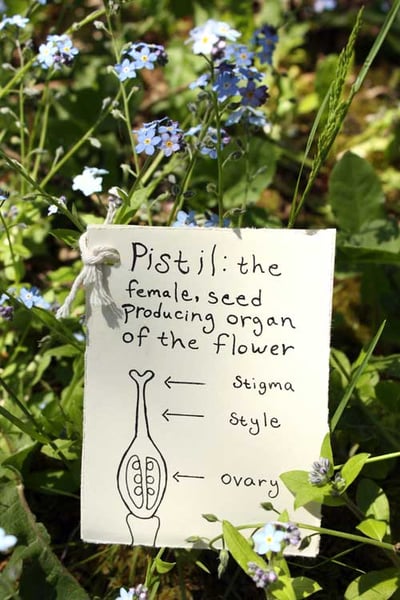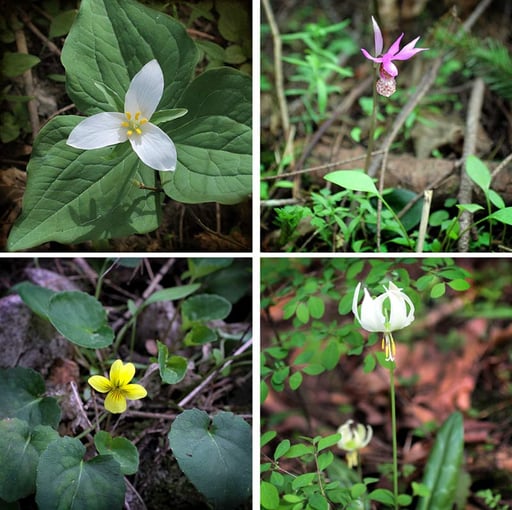Sunlight peeks through the misty morning canopy and dapples the open book in my lap with gold. A soft breeze whispers through the forest carrying the fragrance of May blossoms and bird songs. I sit in a wet patch of fluttering Oxalis, a wild yellow violet smiling into my hand lens, and read the couplet aloud…
26a - Leaves finely dotted, flecked, or reticulately mottled with purple, rather firm and coriaceous, persistent and generally pubescent, plant stoloniferous; mostly in moist woods. Viola sempervirens
26b - Leaves not flecked with purple, thin, generally withering during the winter, often glabrous, plant not stoloniferous; montane to alpine. Viola orbiculata
After careful examination of snaking shoots and leathery leaves, I discover that this spring beauty is indeed Viola sempervirens, the Evergreen Violet!
Learning to identify lovely little flowers will surely enrich how we experience these special places.
All friendships require a bit of curiosity, patience, and understanding. Keying plants in the wild calls for this kind of delightful commitment, too. Learning to identify the lovely little flowers blooming along beloved old-growth trails, bubbling river banks and in the crevices of rocky crags will surely enrich how we experience these special places. It’s quite exciting to meet the new magenta flowers opening on a familiar Rubus spectabilis. As I gaze into the glittering corolla, I remember last year’s juicy salmonberries and feel my connection to this plant deepen.
Deciphering botanical vocabulary can seem a daunting task, but mastering this language can be fun as you unveil the strange and mysterious lives of plants through a sort of scientific poetry. Words roll off the tongue to illuminate an orchid’s pouty labellum, the maple’s winged double samaras, and the wonderfully zygomorphic silhouette of skullcap flowers.
Some phrases are so meticulously descriptive that I am struck with wonder!
Corolla strongly bilabiate with a flaring throat and a prominent maroon blotch.
Just imagine a fuzzy bee zooming in for landing on this flower’s beckoning maroon nectar guide.
I like to make botanical flash cards to learn the subtle nuances of different inflorescence forms, flower parts, and leaf shapes. Simply drawing a pistil and writing the definition helps to solidify the concept in my mind, while allowing time for pleasant meditation. These study cards also make a handy reference tool when hunting and keying out the countless medicinal, edible, and poisonous plants during a weekend in the woods.

Botanical terms are fun to learn with homemade flash cards.
Here in Oregon, I use a well worn copy of Hitchcock and Cronquist’s Flora of the Pacific Northwest to identify plants, but there are excellent field floras available for every region in the US and around the world. The Flora of North America is also being created and regularly updated online. An illustrated botanical glossary is important for any budding botanist to have on hand. A good choice is Plant Identification Terminology: An Illustrated Glossary by Harris and Harris. Be sure to check for botany classes or a native plant society in your town. These groups often have amazing resources available that are specific to your local area.
Whether you feel compelled to photograph, press, eat, or simply enjoy the company of the plants you study, their enchanting beauty will definitely inspire a closer look.











